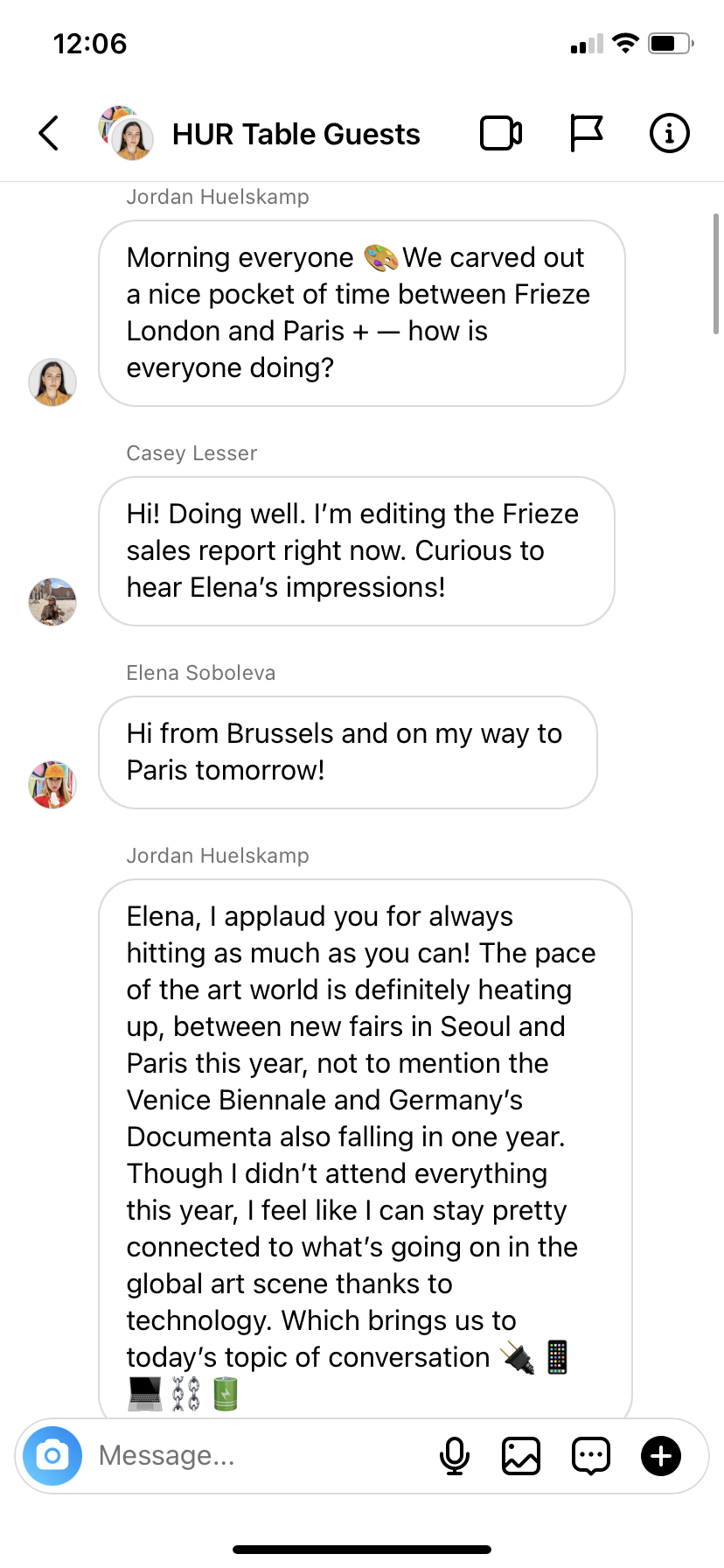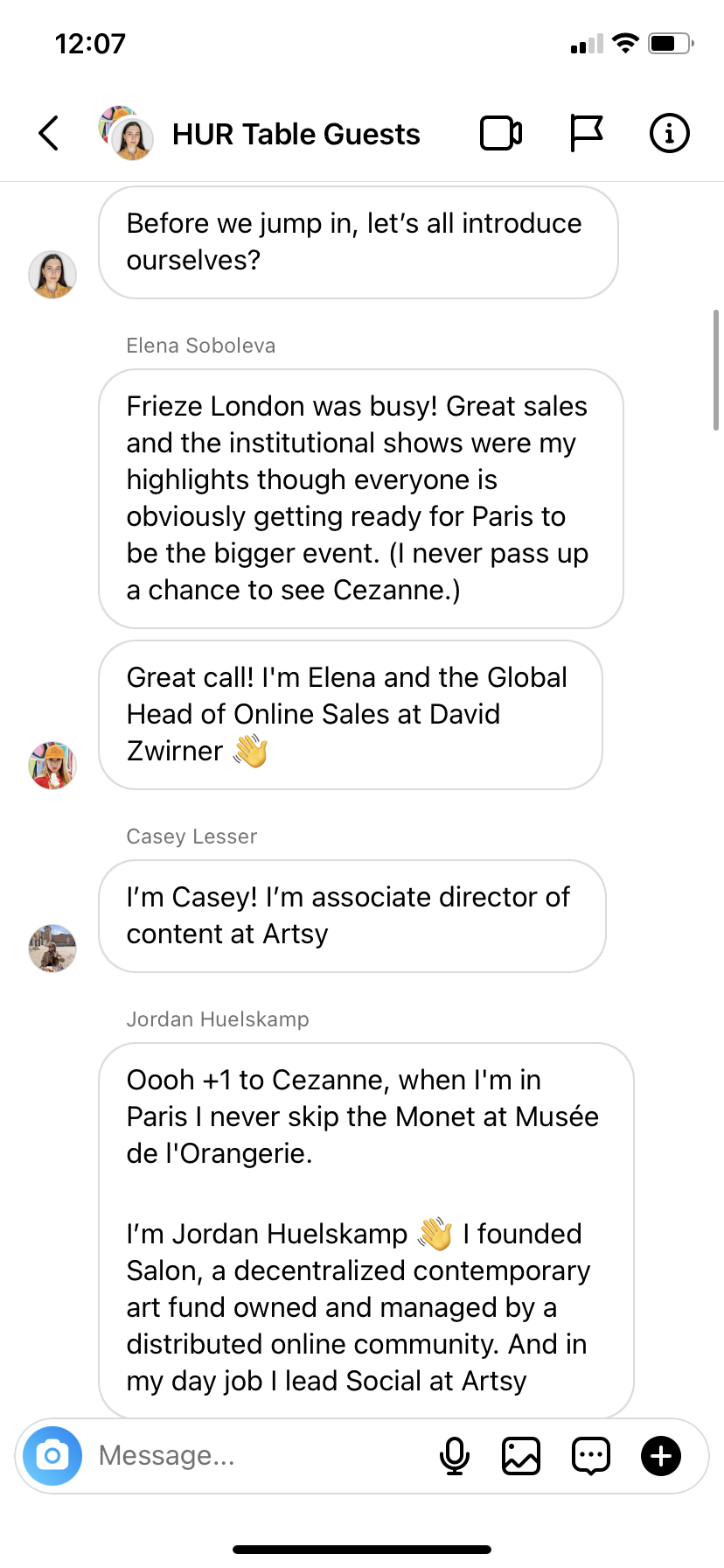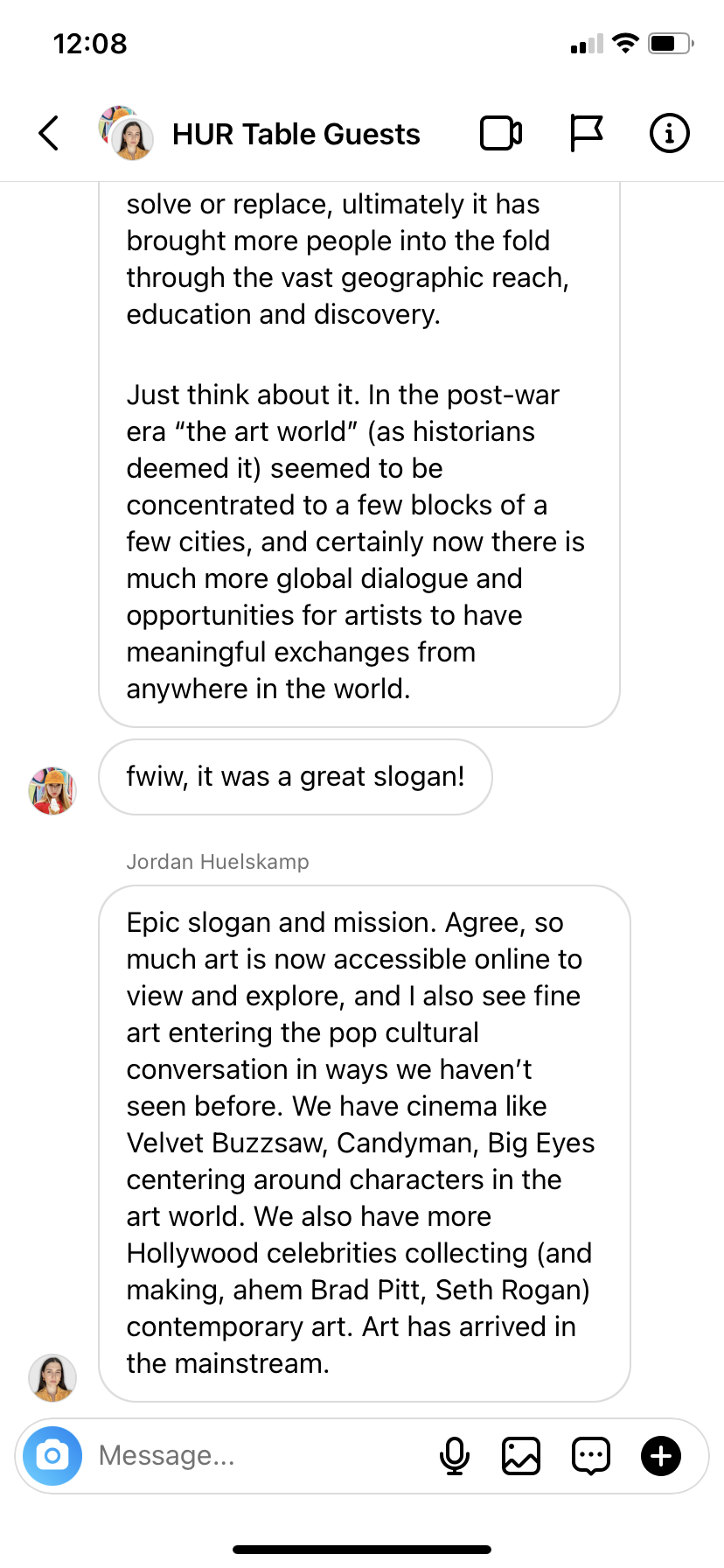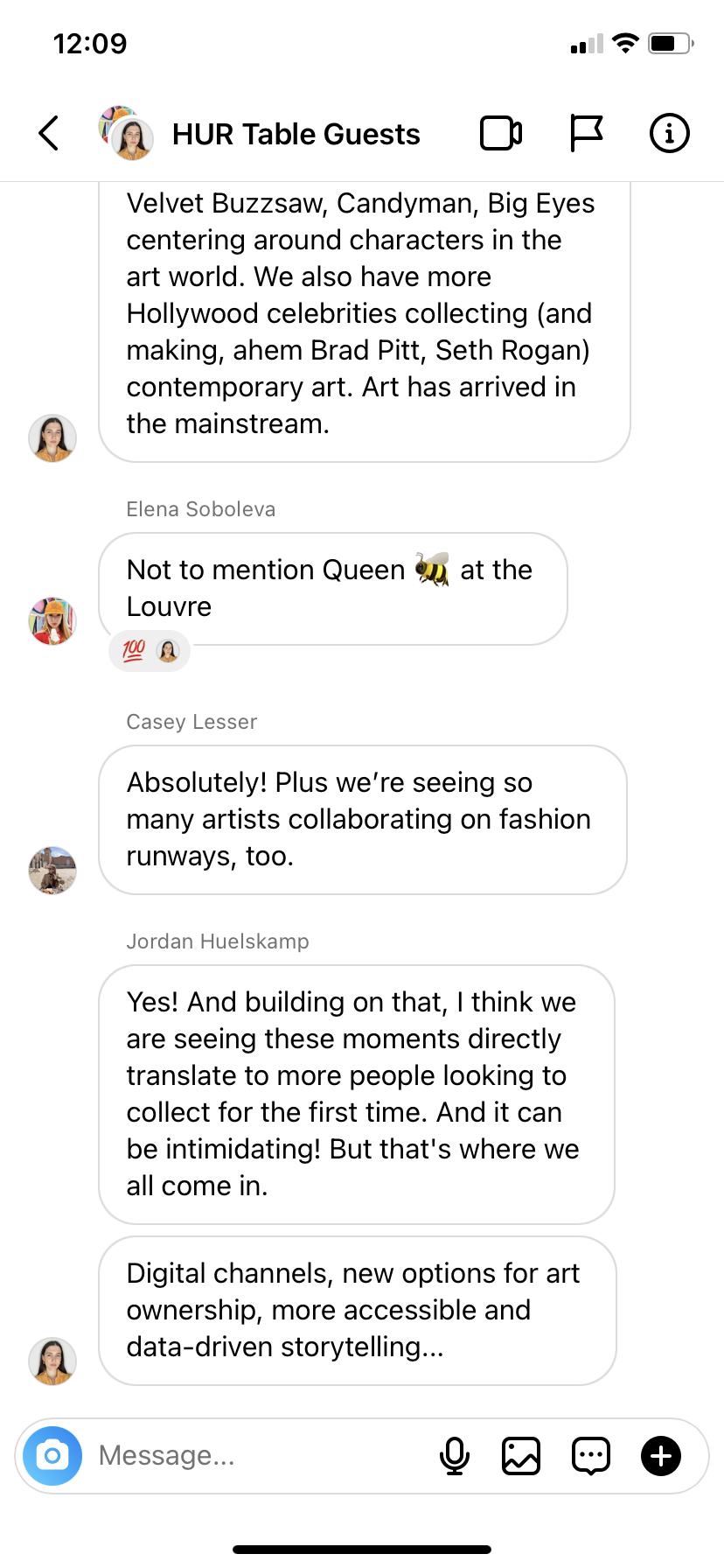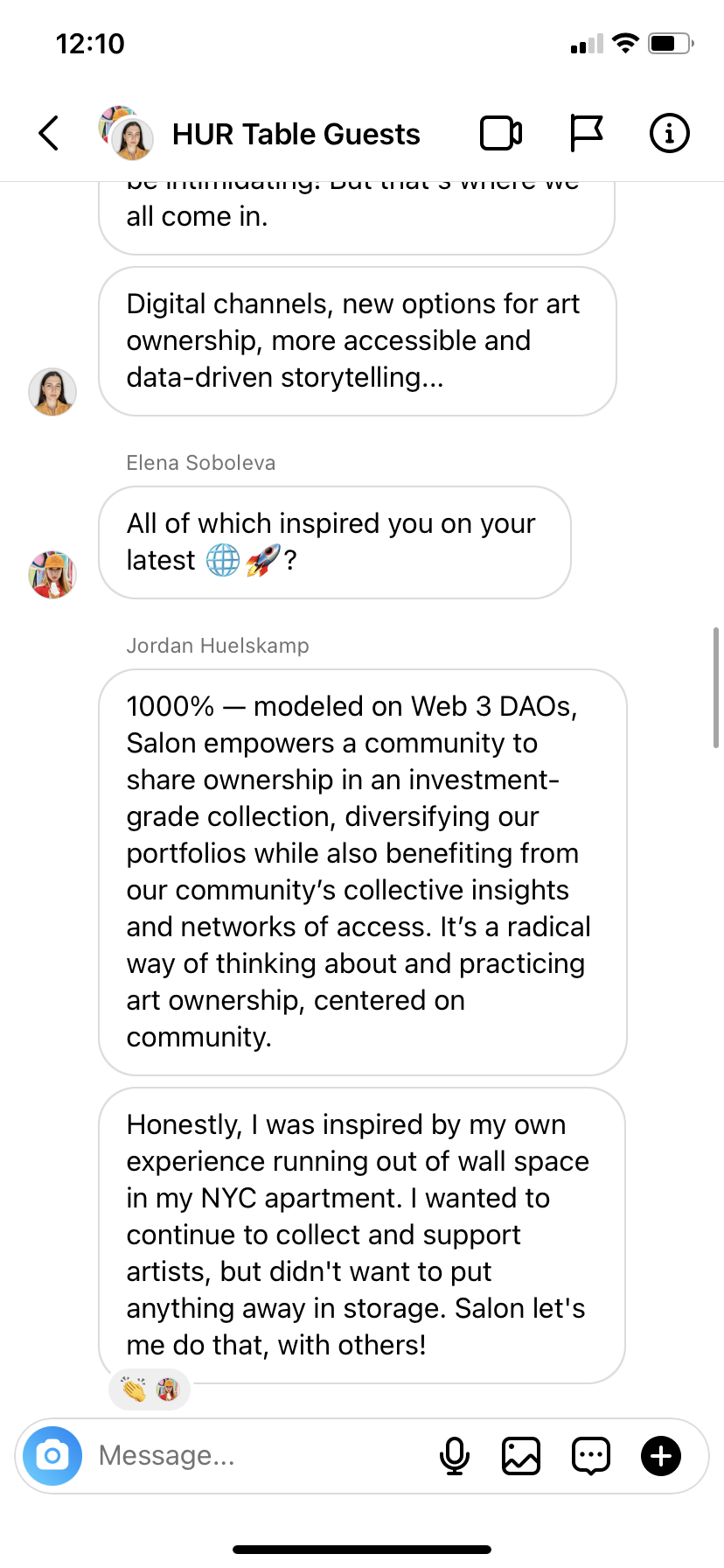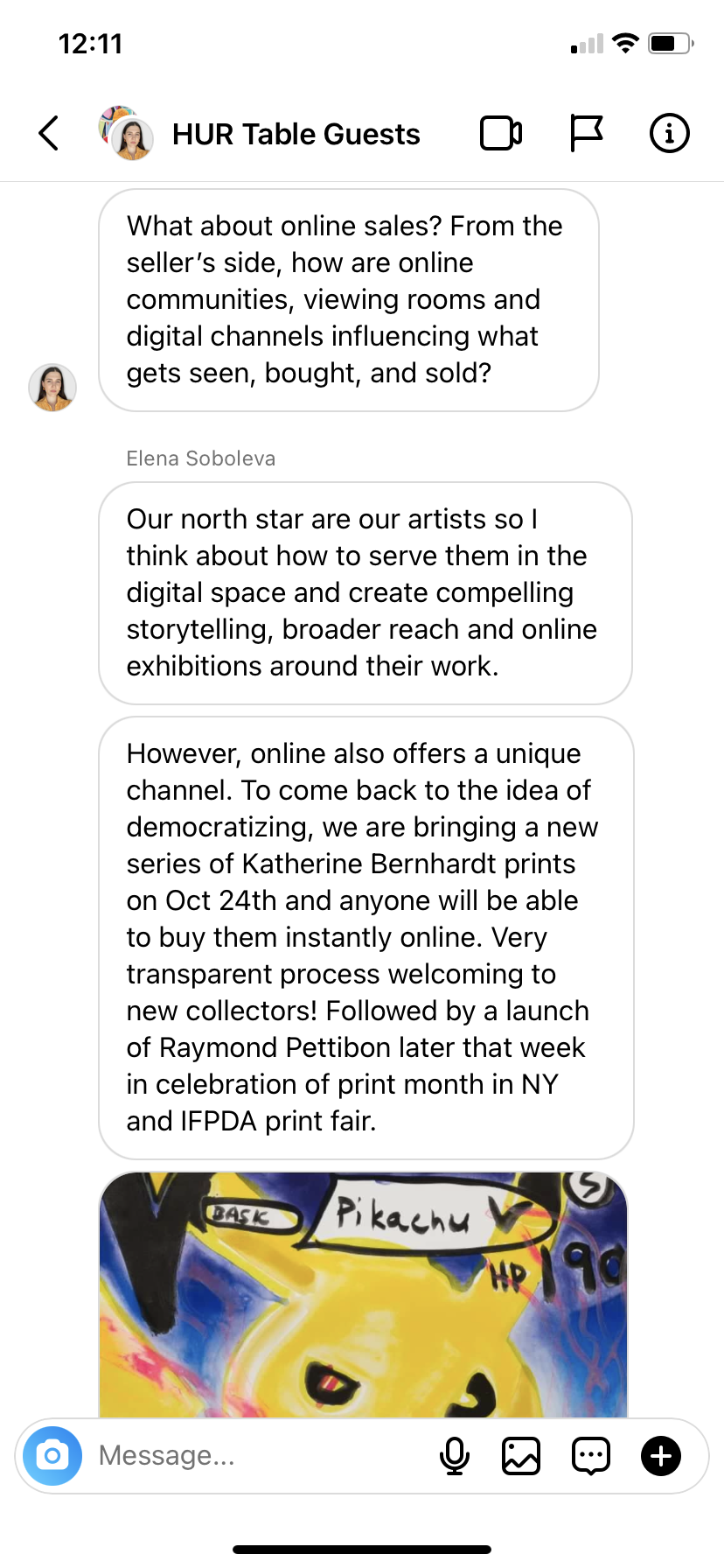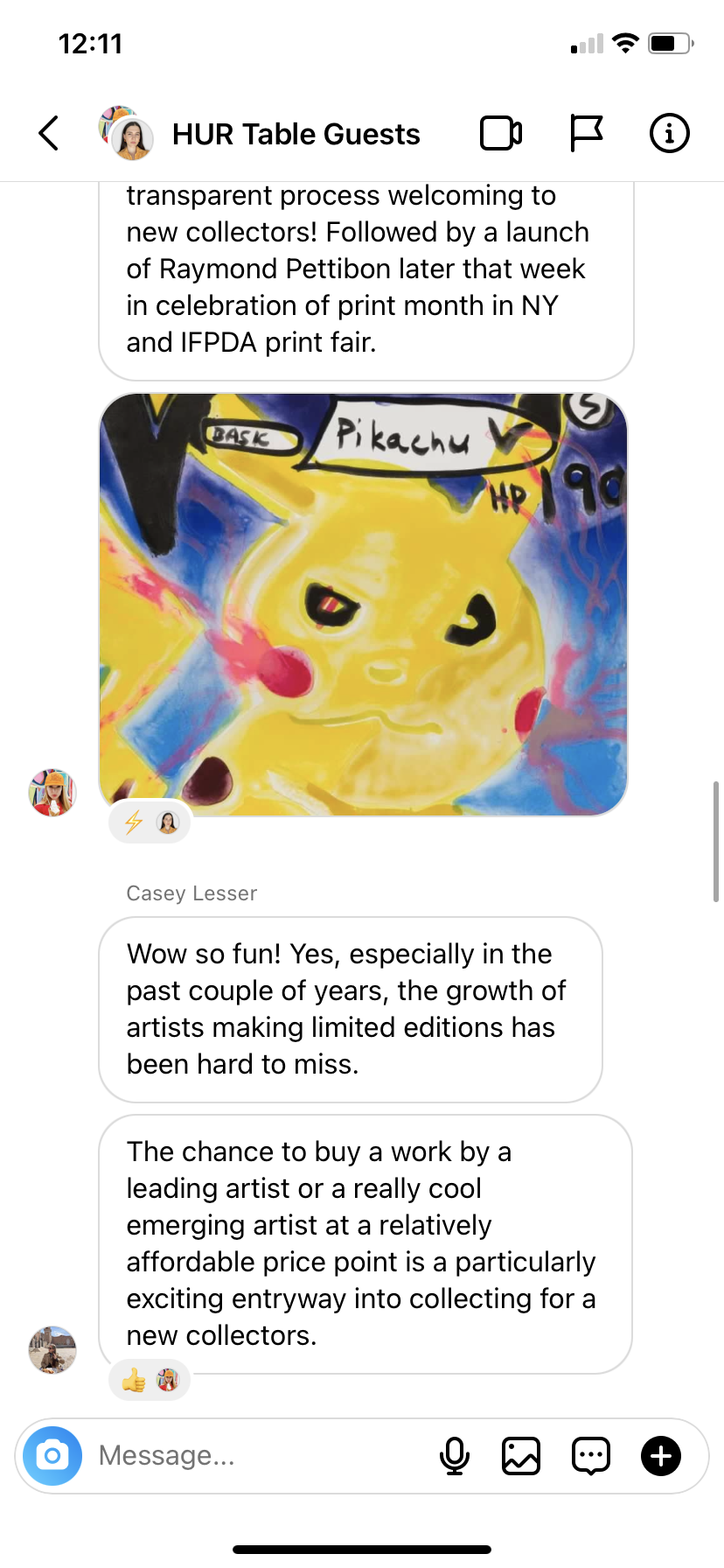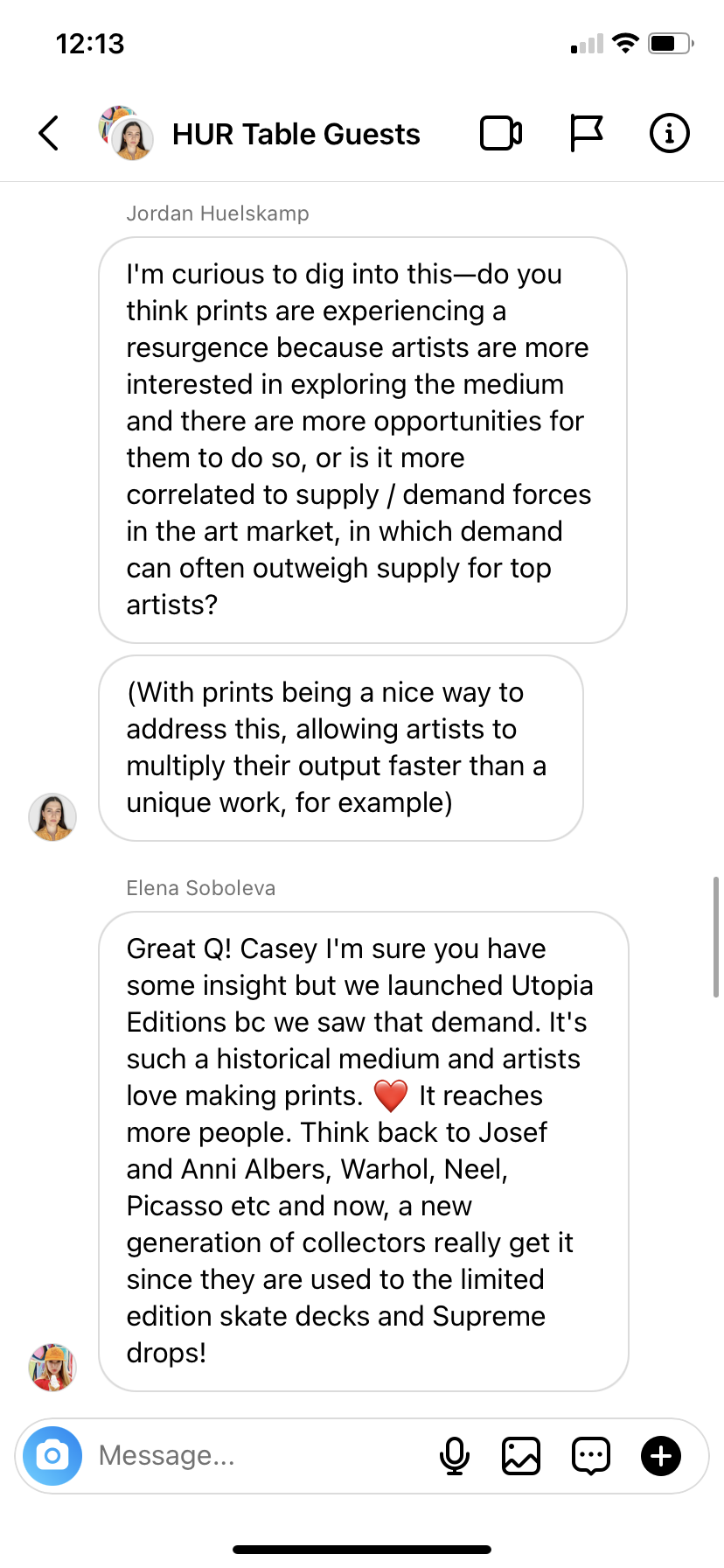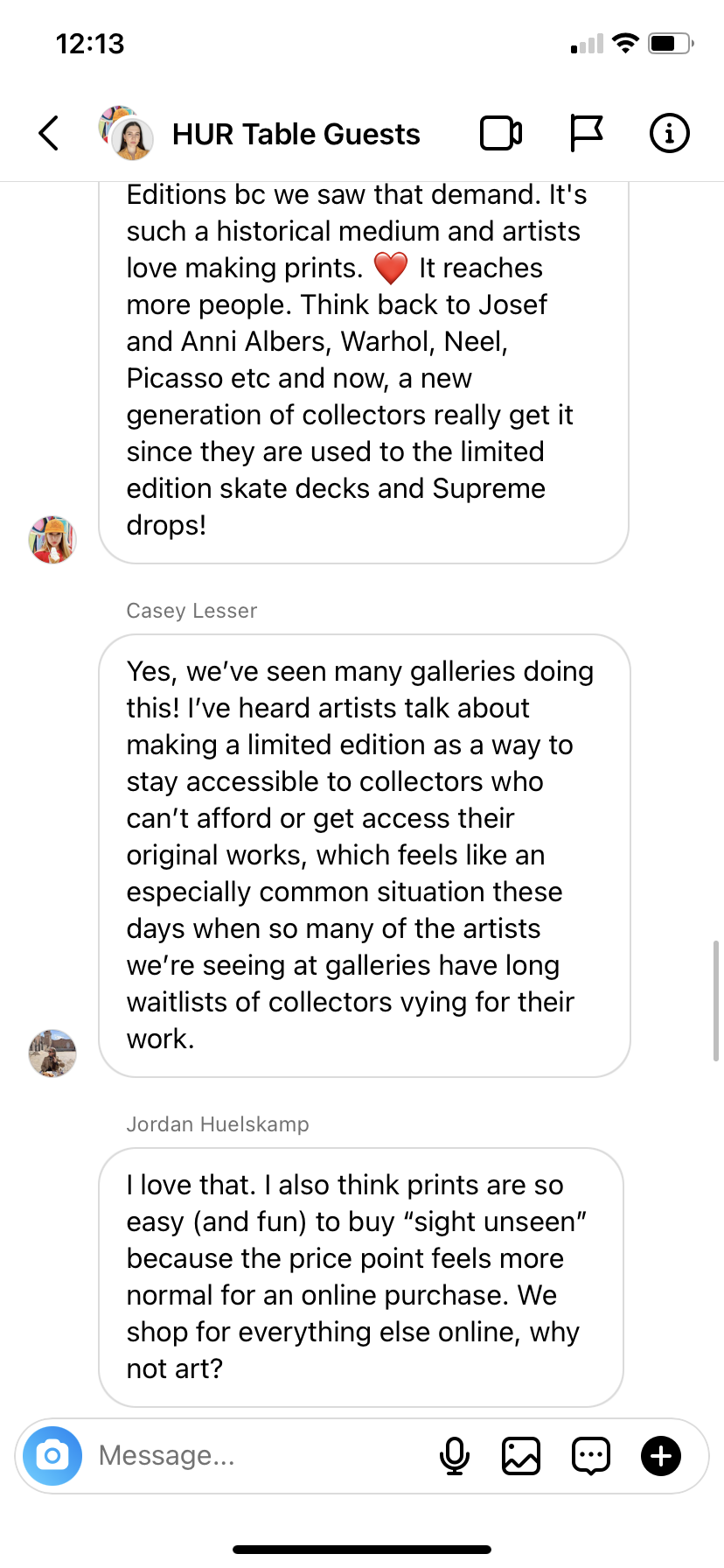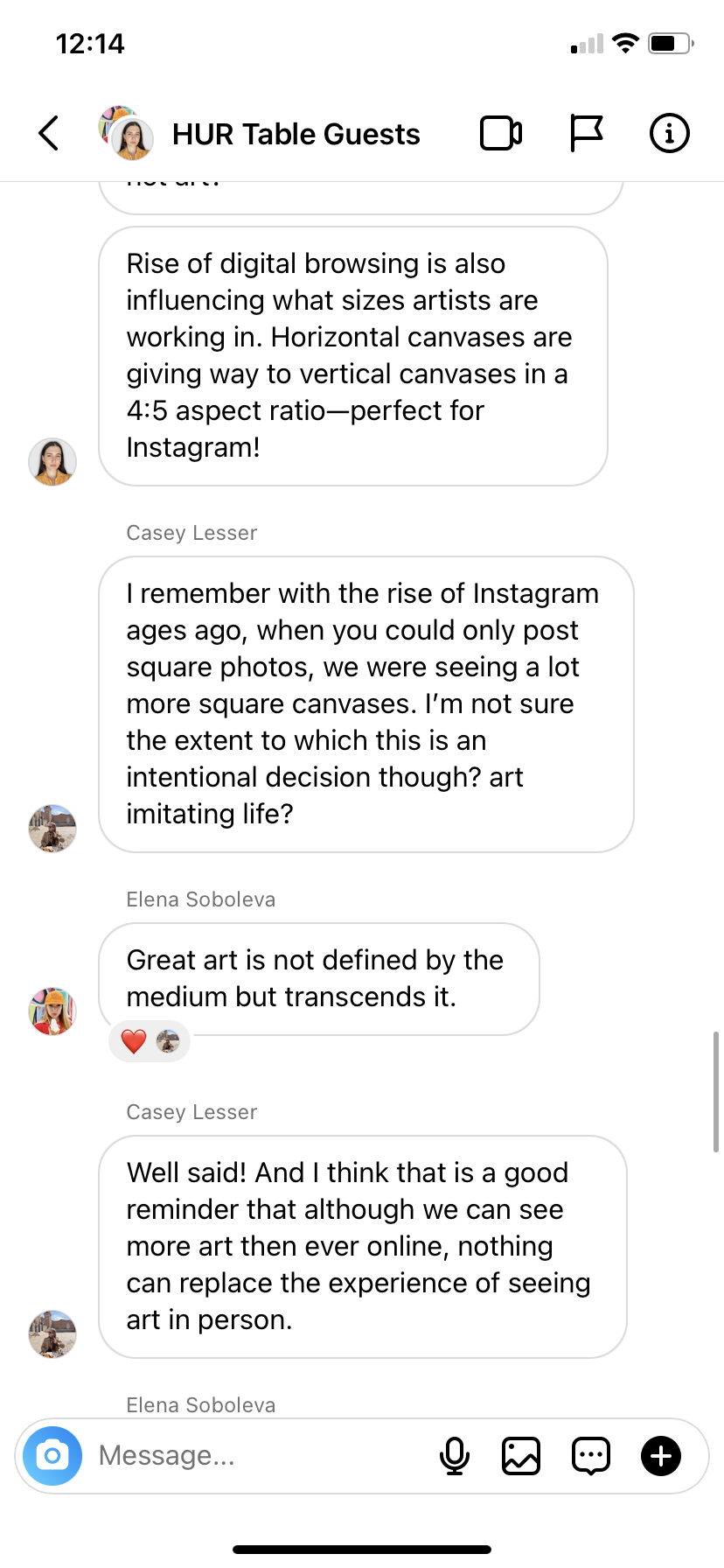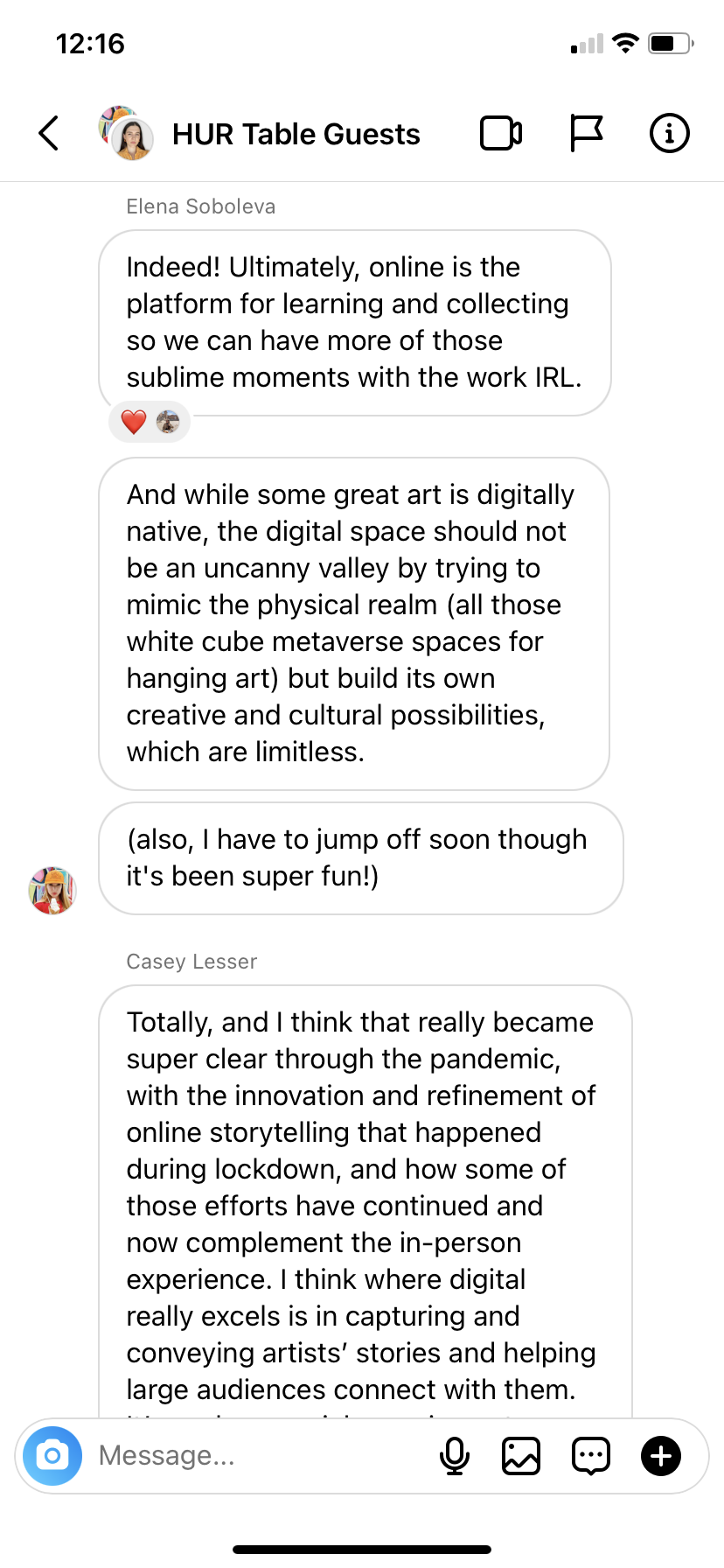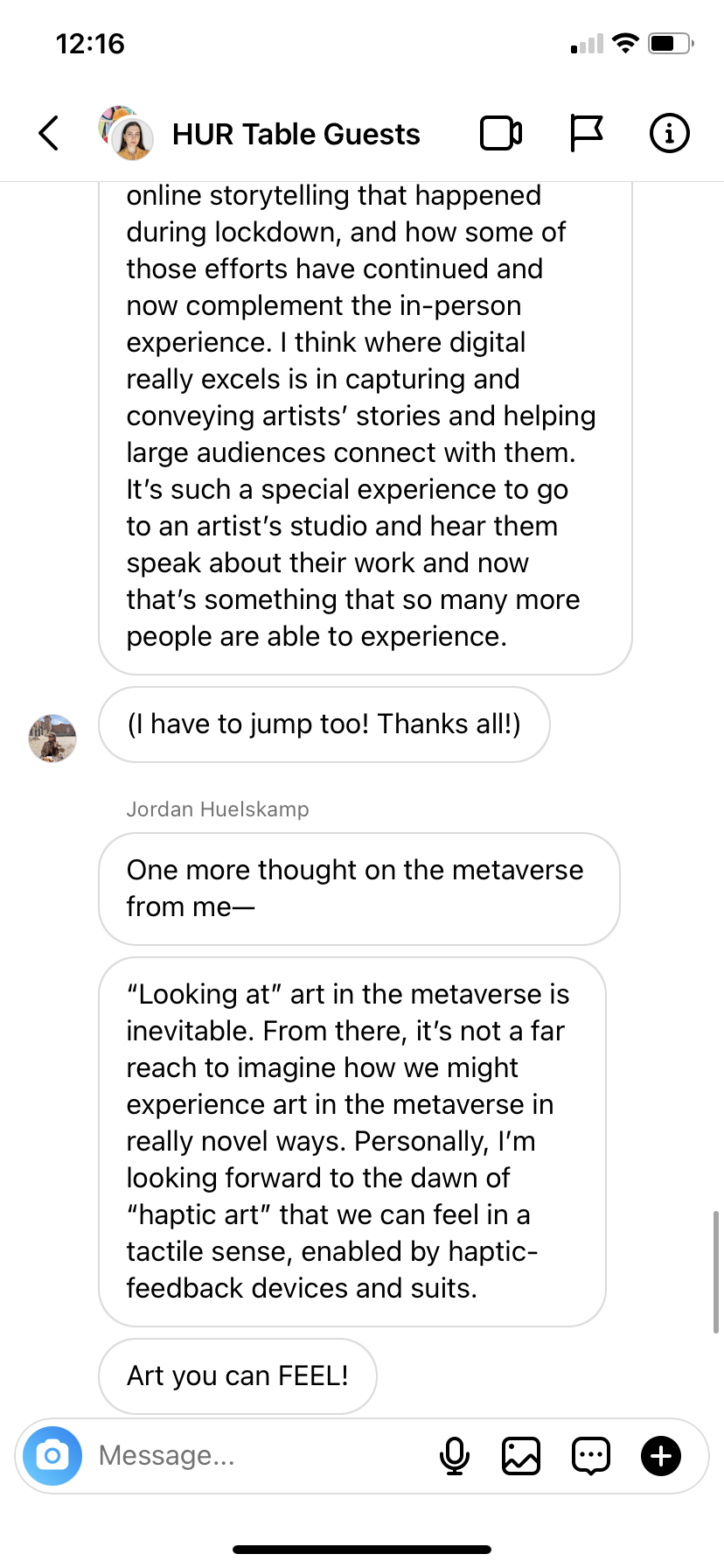Contemporary Art in the Post-Internet Age
Contemporary Art in the Post-Internet Age
With Jordan Huelskamp, Elena Soboleva and Casey Lesser
By HURS Team
With digitization often comes democratization. One of the industries that has seen a major shift since embracing digital, is the art world. And the pandemic played a large part in the traditional industry moving online. Before the COVID-19 pandemic, online transactions represented around a tenth of the global art market value, while in 2021 sales peaked at 13.3 billion dollars, making up a fifth of the total art market value. But digitization is changing more than merely dollars spent. It’s influencing how we consume art, how we buy it, the meaning of ownership and even how artists create works. It also opened up the often closed off art world to new buyers as well as new technologies. Removing the barriers that limited the exchange of knowledge, connections and access. From NFTs to joint ownership to digital viewing experiences. They all offer new opportunities for collectors, artists and new audiences to interact with works. With many of the new technologies still in their infancy, the bigger question is how the online and offline will coexist.
JORDAN HUELSKAMP
Jordan Huelskamp is the Founder of Salon, the decentralized art fund. Harnessing blockchain-based community governance, Salon brings Web 3 technology to the physical art investment market—not NFTs. Using Salon’s app, members make collective decisions to purchase art, with a focus on emerging and mid-career artists. As a New York-based entrepreneur whose expertise includes digital strategy, curation, community building and web 3, she’s an innovative leader in the art and technology space. Huelskamp also spearheads the Social team at Artsy, where she leads marketing, community and influencer collaborations across all social channels.
ELENA SOBOLEVA
Elena Soboleva is the Global Head of Online Sales at David Zwirner Gallery, where she leads the programming and strategy for the gallery’s worldwide digital sales channels and plans over 40 online exhibitions a year. Soboleva has over a decade of experience in the art and technology space. Before joining David Zwirner, she was the Lead Curator at Artsy, working on early collector growth for the platform and curating commissions, performances and site-specific installations for brand partners including Gucci, Dior, UBS, Microsoft HoloLens and Snapchat. She is also a curator and co-founded The Embassy art space in Brussels.
CASEY LESSER
Casey Lesser is a Brooklyn-based writer, editor, and curator. She earned a master's in art history from NYU's Institute of Fine Arts in 2013, just before joining the editorial team at Artsy, the world’s leading online art marketplace. Now the Associate Director of Content at Artsy, Lesser has written and edited thousands of articles on contemporary artists, galleries, collecting, the art market, art history, and creativity.
To find out what’s next in art we asked three industry insiders about the democratization of art, how digital channels influence what’s sold and produced and the digital vs. the physical experience.
INTRODUCTIONS
THE STATE OF DEMOCRATIZATION OF ART?
THE INFLUENCE OF DIGITAL CHANNELS ON WHAT'S SOLD ONLINE
Katherine Bernhardt, Pikachu, 2022 (detail). © Katherine Bernhardt. Courtesy the artist and David Zwirner. Available on davidzwirner.com. Available to buy from the 27th of October.




